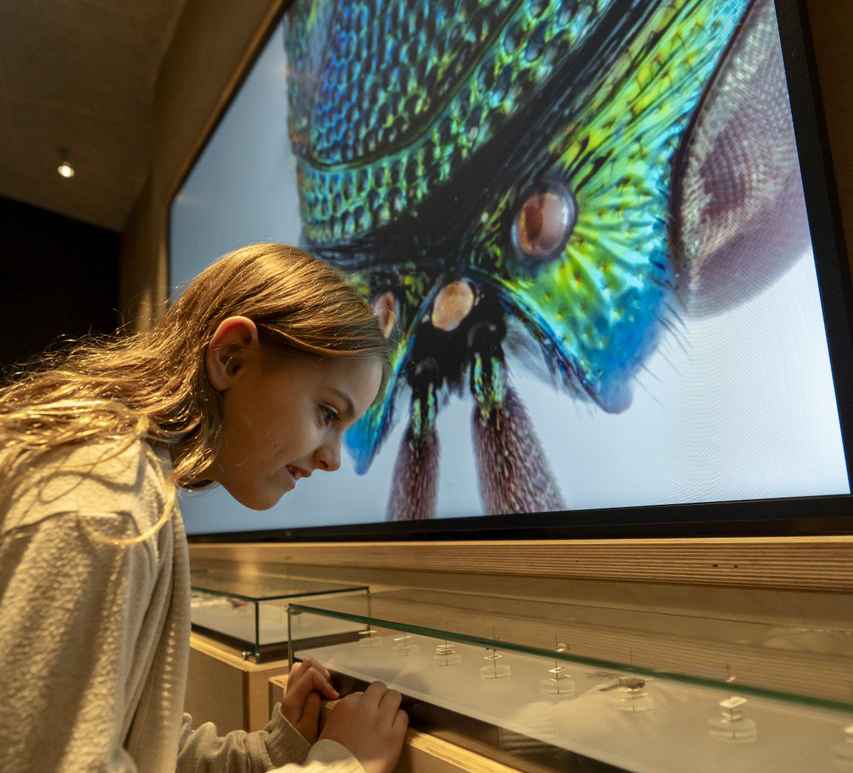With the coming of fall, it is a good time to review the fieldwork that took place this summer, and thank some of the people that made it all possible. The Invertebrate Palaeontology team at the Royal Saskatchewan Museum explored a few different field areas this year—focusing on the uppermost Cretaceous and Paleocene rocks of the Big Muddy Badlands, the Cretaceous-Paleogene boundary and surrounding rocks in Grasslands National Park, and some of the Upper Cretaceous rocks in the Eastend area.
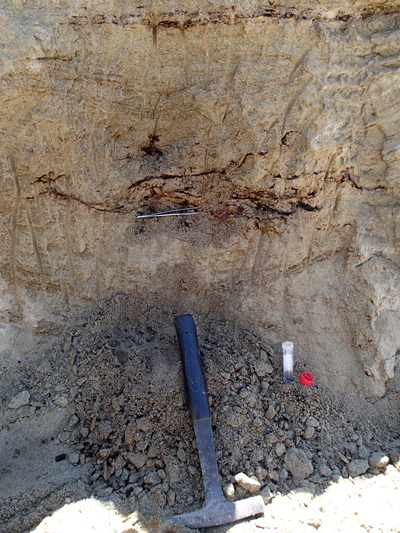 |
Early in the season, we were able to visit some of the classic sections in the Eastend area. In this picture, the orange blob near the end of the forceps is one of the larger pieces of amber found among stringers of plant material in the ‘Scotty’ T. rex dig site. |
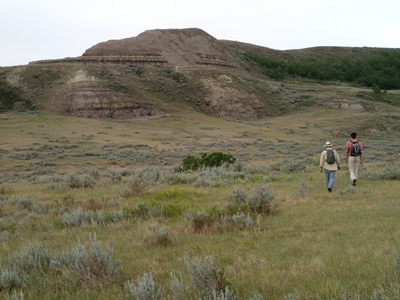 |
The majority of this field season was spent examining the Big Muddy Valley, as part of a site development project supported by the Saskatchewan Heritage Foundation. Here, Wes and Brennan (a graduate student from the University of Alberta) hike toward one of the Paleocene outcrops that make this region so special for amber research. |
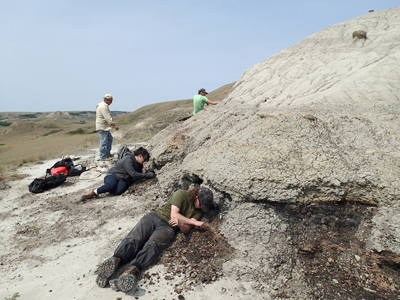 |
Wes and Brennan were able to find and excavate a relatively complete Paleocene turtle shell just a few meters above an amber-producing coal seam. Royal Saskatchewan Museum Zoology summer students Kirsten, Tom and Graham (outside of the frame) were kind enough to help collect amber from the site. It was a windy day, so everyone took a little bit of the outcrop home with them. . . sometimes in unusual places. |
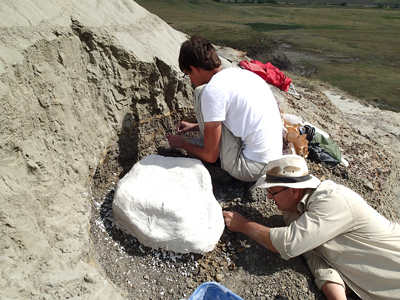 |
Work on the turtle progressed rapidly. Here, the shell is supported by a field jacket, and Wes is preparing to separate it from the surrounding rock. Meanwhile, Brennan is collecting sediment samples for pollen analysis. |
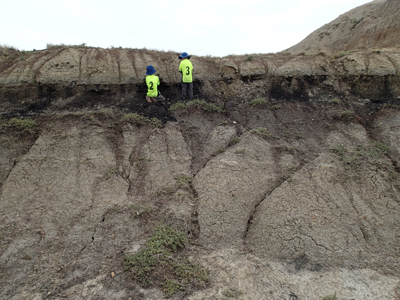 |
One day we were joined by “Thing 2” and “Thing 3” (their mother likes to call them Ethan and Miles) for some family amber collecting. |
 |
The team was also joined by the Sadowski family and their friend, for some amber and microsite collecting. Ultimately, the microsite yielded a couple thousand microfossils, including gar scales, turtle shell fragments, crocodile scutes, champsosaur vertebrae, and assorted small bones and teeth. |
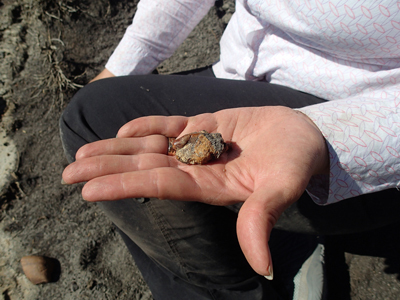 |
Later in July, we sampled the Upper Cretaceous in the Big Muddy Badlands. Royal Saskatchewan Museum Programming Specialist Rebecca discovered a highly productive site with large pieces of amber. |
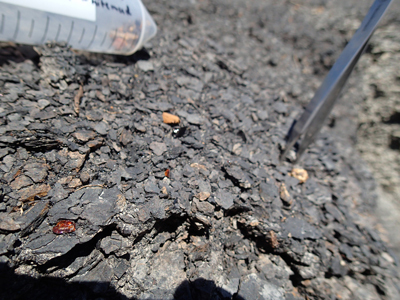 |
We spent multiple days sweeping the area for surface occurrences and shallowly buried amber, with help from Rebecca, Lori, and Botswana. |
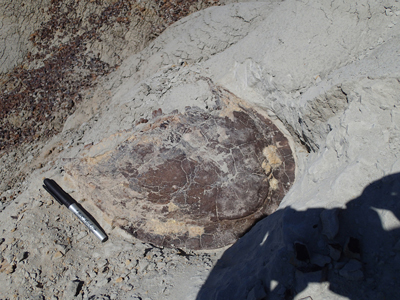 |
Meanwhile, Brennan managed to find and excavate a second large turtle shell! |
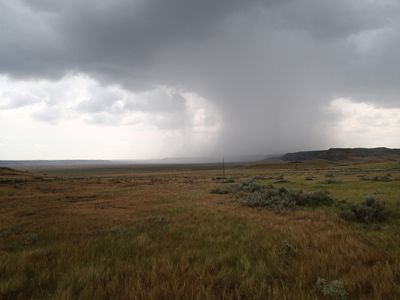 |
Throughout much of the Big Muddy Badlands fieldwork storms lingered nearby. The field team was only rained out once in July, but at some points we could see curtains of downpour only a few hundred meters up and down valley from our sites. We were very lucky! |
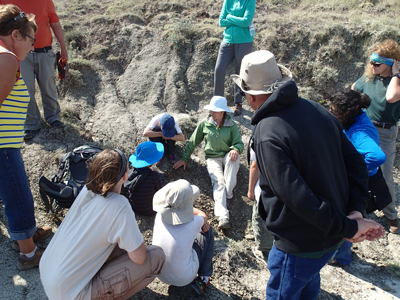 |
In August we joined up with the Royal Saskatchewan Museum Vertebrate Palaeontology team and a field school from McGill University led by Hans Larsson, to explore for amber around Grasslands National Park. Here, Emily provides a public dig tour as part of the GNP “Fossil Fever” event. |
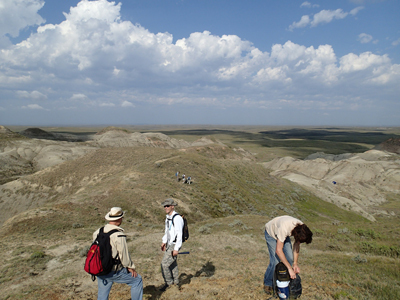 |
The hike into the section was beautiful, and amber-bearing coals in the region allowed us to sample before and after the Cretaceous-Paleogene extinction event. |
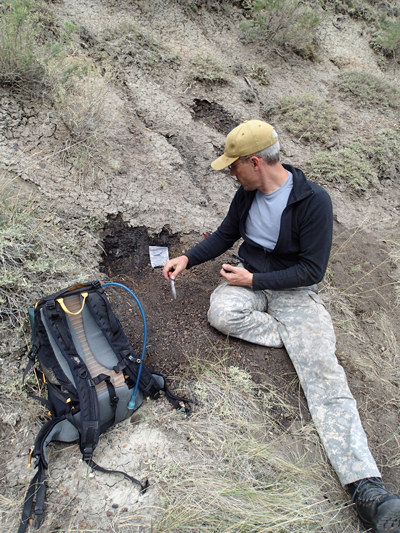 |
The highlight for amber research was when long-time Royal Saskatchewan Museum volunteer Warren discovered relatively abundant amber within 5 cm of the Cretaceous-Paleogene boundary claystone! |
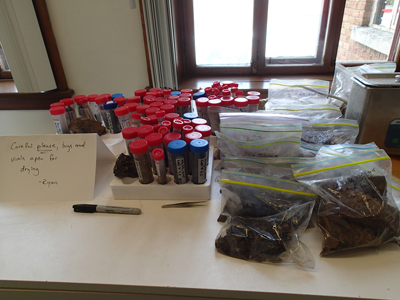 |
Winter lab work at the Royal Saskatchewan Museum will reveal the surprises held by the amber pieces and field jackets collected this season. |
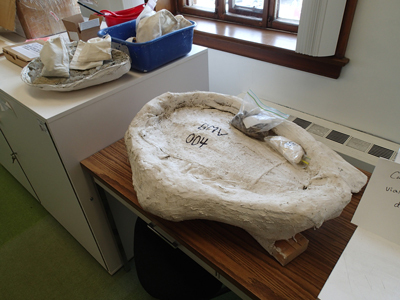 |
The turtle shells were jacketed and brought back to our lab. |
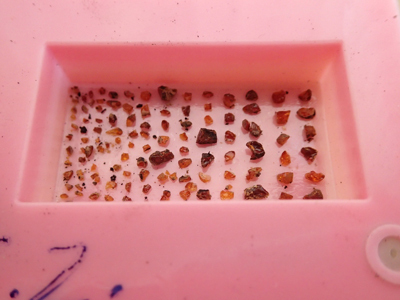 |
Getting ready to secure the tiniest of pieces of amber in resin. |

